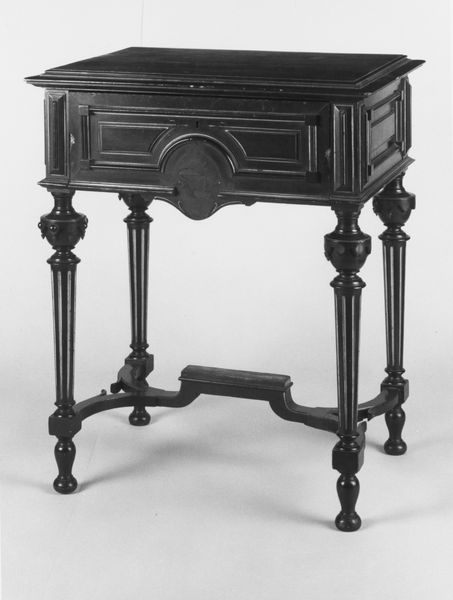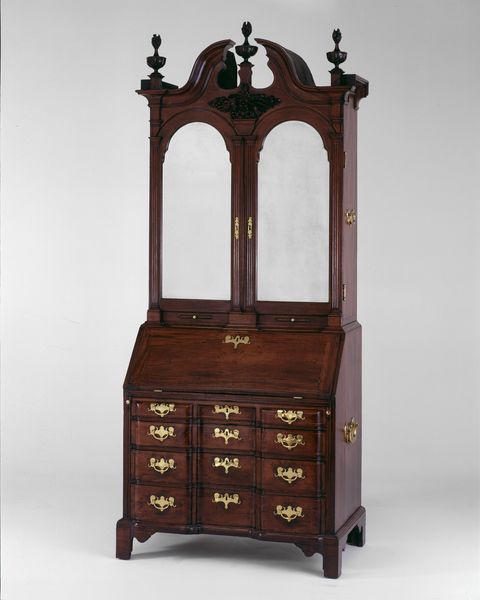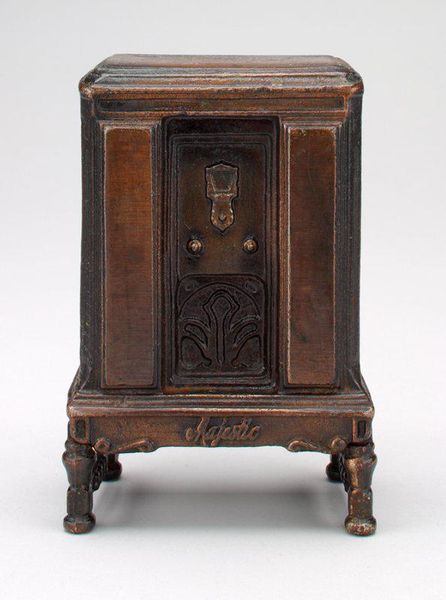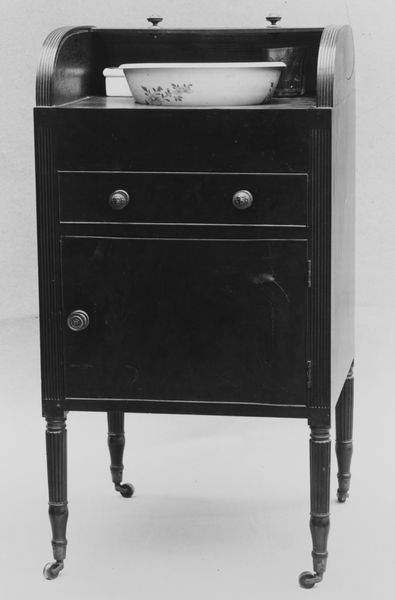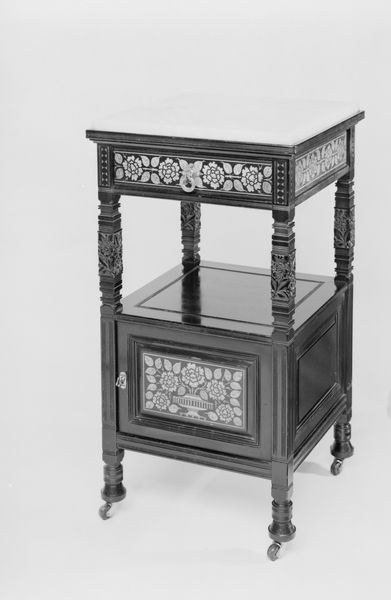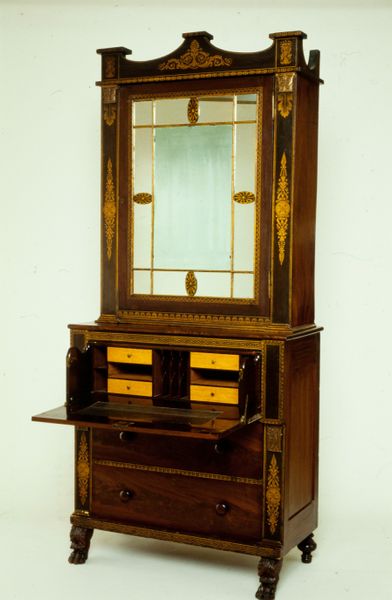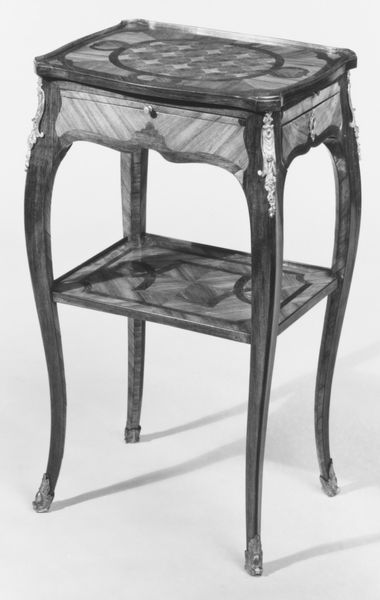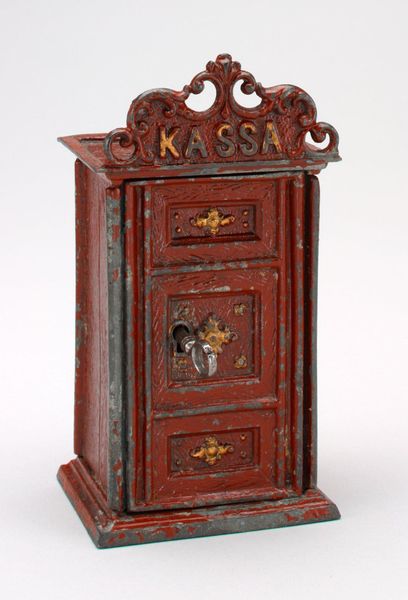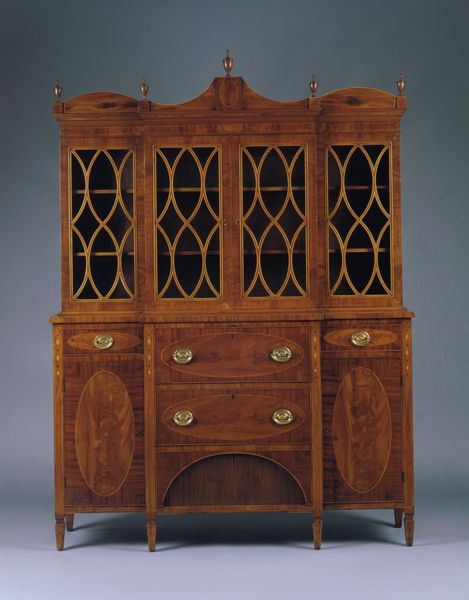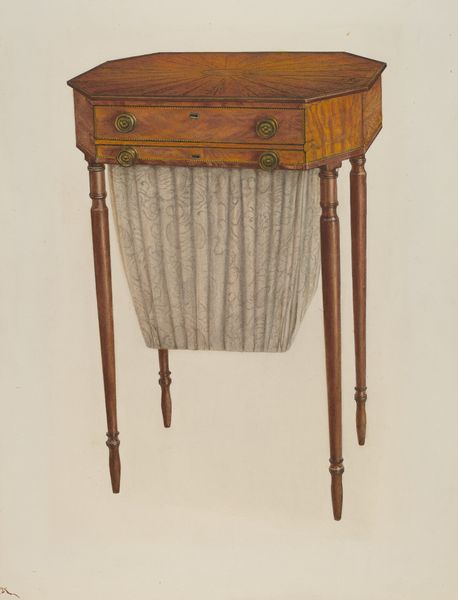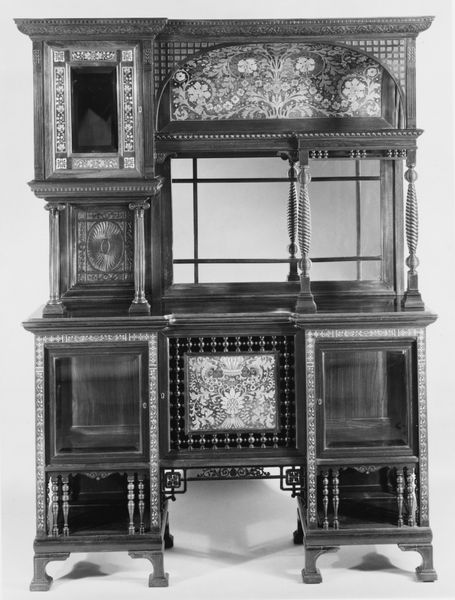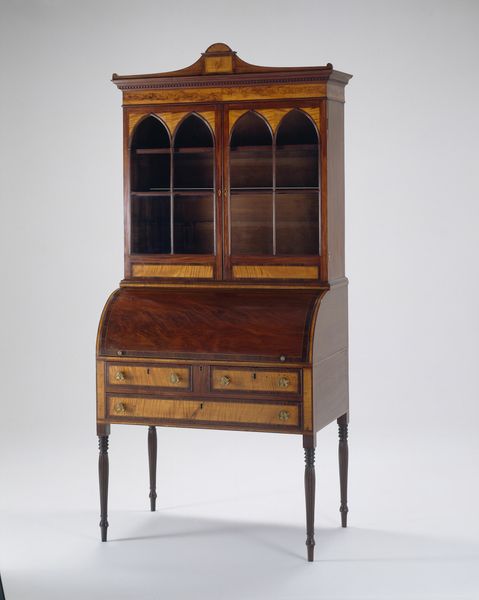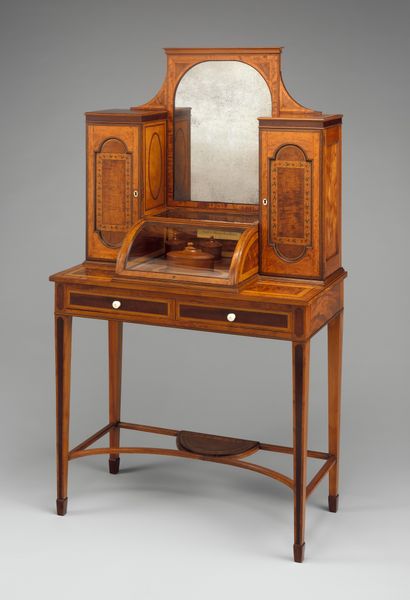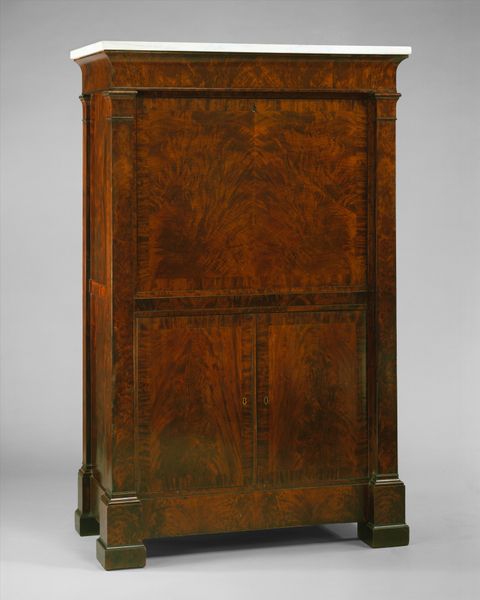
Dimensions: Overall: 29 5/8 × 17 1/2 × 12 1/4 in. (75.2 × 44.5 × 31.1 cm)
Copyright: Public Domain
Curator: Well, isn’t this "Writing table," circa 1750 to 1775, just exquisite? Roger Vandercruse, or Lacroix as he was known, certainly possessed a unique vision for functional art. Editor: My initial impression? Delicate. There’s a refined linearity to the legs, those serpentine curves juxtaposed with the rectangular planes of the body. It projects a formal elegance. Curator: Lacroix mastered the Rococo style, evident in the playful asymmetry and the love for natural forms, even abstractly presented here. There's also this incredible emphasis on the wood and metal materiality itself, combined seamlessly to embody luxury. It’s not merely a table; it is a symbol of status and cultivated taste during that era. Editor: Notice how the painted decoration becomes part of the overall structure. They aren't merely surface adornments but integrated layers. See how the arrangement of painted vases and objects almost read like an allegorical still life. There’s definitely something more than meets the eye at first glance. Curator: Exactly. Furniture in the 18th century often served a dual purpose, acting as conversation pieces, reflecting social standing. The very act of writing at a table such as this transformed from mere practicality into ritual. To imagine letters of love or political intrigue composed at this very surface! Editor: And it all points to function dictated by form, which becomes a new concept through this type of art object. A visual spectacle where every line and curve holds aesthetic intention, creating a perfect harmony between beauty and utility. The visual narrative invites one to invent stories surrounding its creation. Curator: Yes, precisely. Reflecting upon Lacroix's "Writing Table," we have not just glimpsed the pinnacle of 18th-century craftsmanship. But have encountered the social theater performed by such an object within wealthy circles of the day. Editor: Indeed, this encounter illuminates not merely the art of furniture making but its subtle language of prestige communicated across centuries, via shape, form, and material.
Comments
No comments
Be the first to comment and join the conversation on the ultimate creative platform.
